
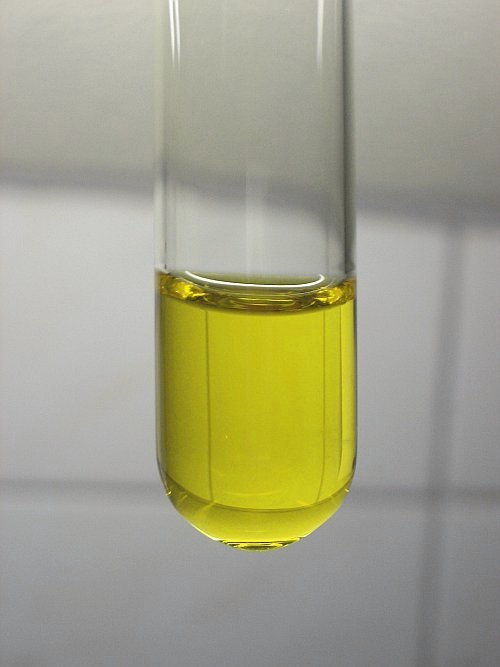

Aqueous solutions and precipitates of cerium
Cerium is one of the few lanthanide metals, which has a fairly interesting aqueous redox chemistry. In aqueous solution, it can exist in the +3 oxidation state and the +4 oxidation state. The most stable oxidation state is +3. If the metal is in that oxidation state, then it is not reducing nor oxidizing. When the metal is in its +4 oxidation state, then it is strongly oxidizing. At that high oxidation state, the metal also suffers from extensive hydrolysis and in order to make a clear solution of cerium in the +4 oxidation state, quite some acid has to be added.
![]()
Oxidation state +3
A solution of a cerium salt in oxidation state +3 is colorless. The metal hardly has any coordination chemistry in this oxidation state. It just is a colorless purely basic cationic species. With hydroxides, the white and very fine flocculent precipitate of Ce(OH)3 is formed, which only very slowly settles at the bottom. It is hard to isolate this precipitate without a centrifuge. Below, two pictures are given. The picture at the left shows a solution, containing cerium (III) ions at fairly high concentration, the picture at the right shows the precipitate of Ce(OH)3 in front of a piece of an off-white artists paper. The precipitate is purely white.
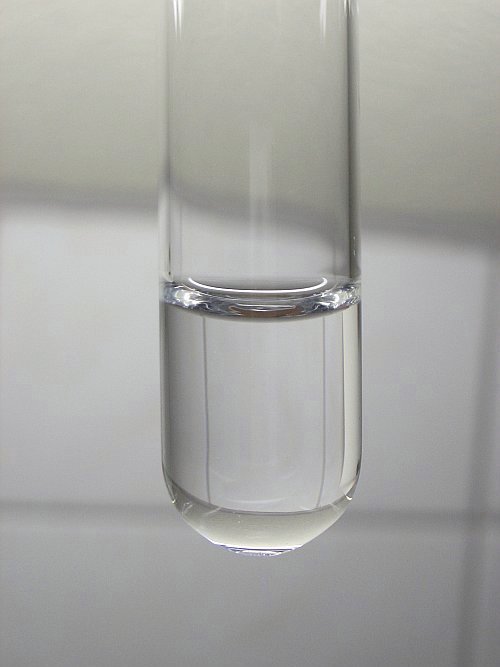
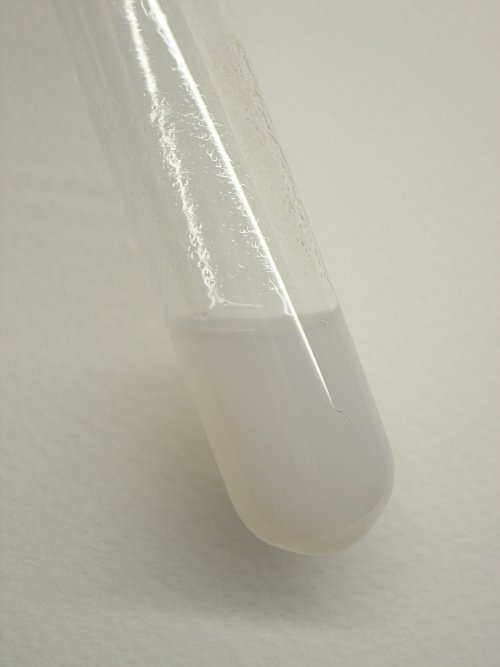
Oxidation state +4
A solution of a cerium (IV) salt is strongly oxidizing and such a solution has a remarkably intense yellow color. Quite some acid is needed in order to prepare a solution which is totally clear. When solid cerium (IV) sulfate is added to plain water, then it dissolves as a clear liquid, but dissolving all of the solid is very hard in that case. Adding some acid makes the dissolving of the solid more easy.
When a solution of a cerium (IV) salt is made alkaline, then a very pale yellow precipitate of hydrous ceric oxide, CeO2.nH2O is formed. Compared to the very intense yellow color, it is remarkable how faint the yellow color of the precipitate is. The left picture below shows a solution of cerium (IV) sulfate in dilute sulphuric acid (approximately 0.5 mol/l of H2SO4). The right one shows the same solution, to which a slight excess of a concentrated solution of NaOH is added.

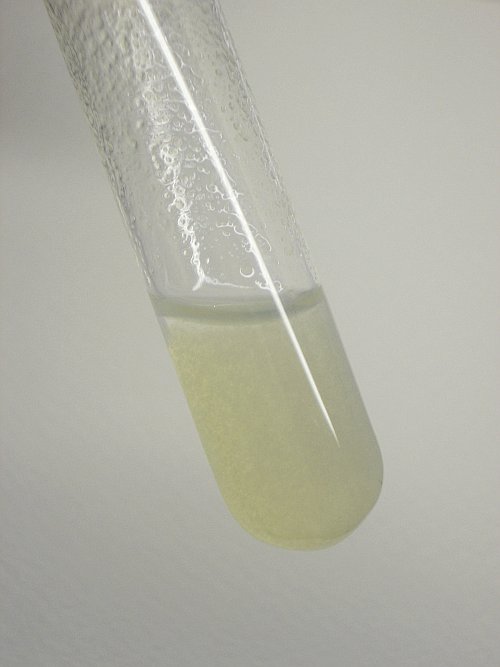
Comparison of both alkaline precipitates
The precipitate of hydrous ceric oxide fairly quickly settles at the bottom, while the precipitate of cerium (III) hydroxide only settles very slowly. At first glance, both precipitates seem white, but when they are placed next to each other, then the ceric oxide precipitate clearly looks yellow, compared to the cerium (III) hydroxide. The contrast between the two precipitates is shown below.
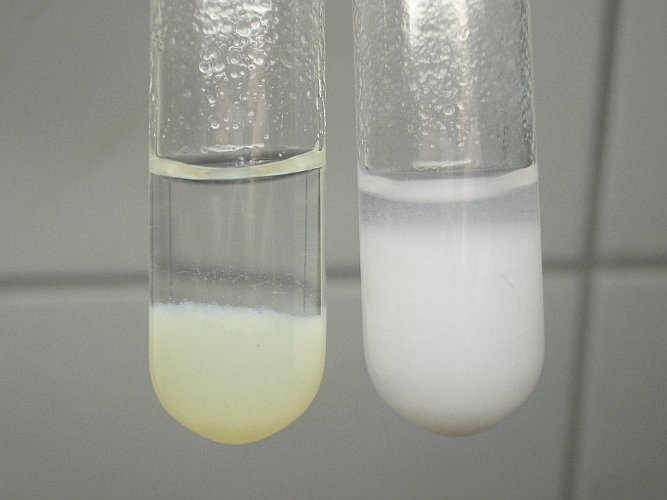
The left test tube contains the ceric oxide and the right test tube contains the cerium (III) hydroxide.
When the precipitate of cerium (III) hydroxide is acidified with a slight excess amount of sulphuric acid, then it dissolves at once and the liquid becomes clear and colorless.
When the precipitate of ceric oxide is acidified with a slight excess of sulphuric acid, then the liquid becomes a little more yellow, but the precipitate hardly dissolves. When a large amount of sulphuric acid is added, such that the solution is strongly acidic (e.g. 1 mol/l of H2SO4), then the precipitate still dissolves very slowly. It takes several minutes before the liquid is clear and deep yellow again, when a large excess amount of acid is added.
back to solutions/precipitates main page
back to miscellaneous main page